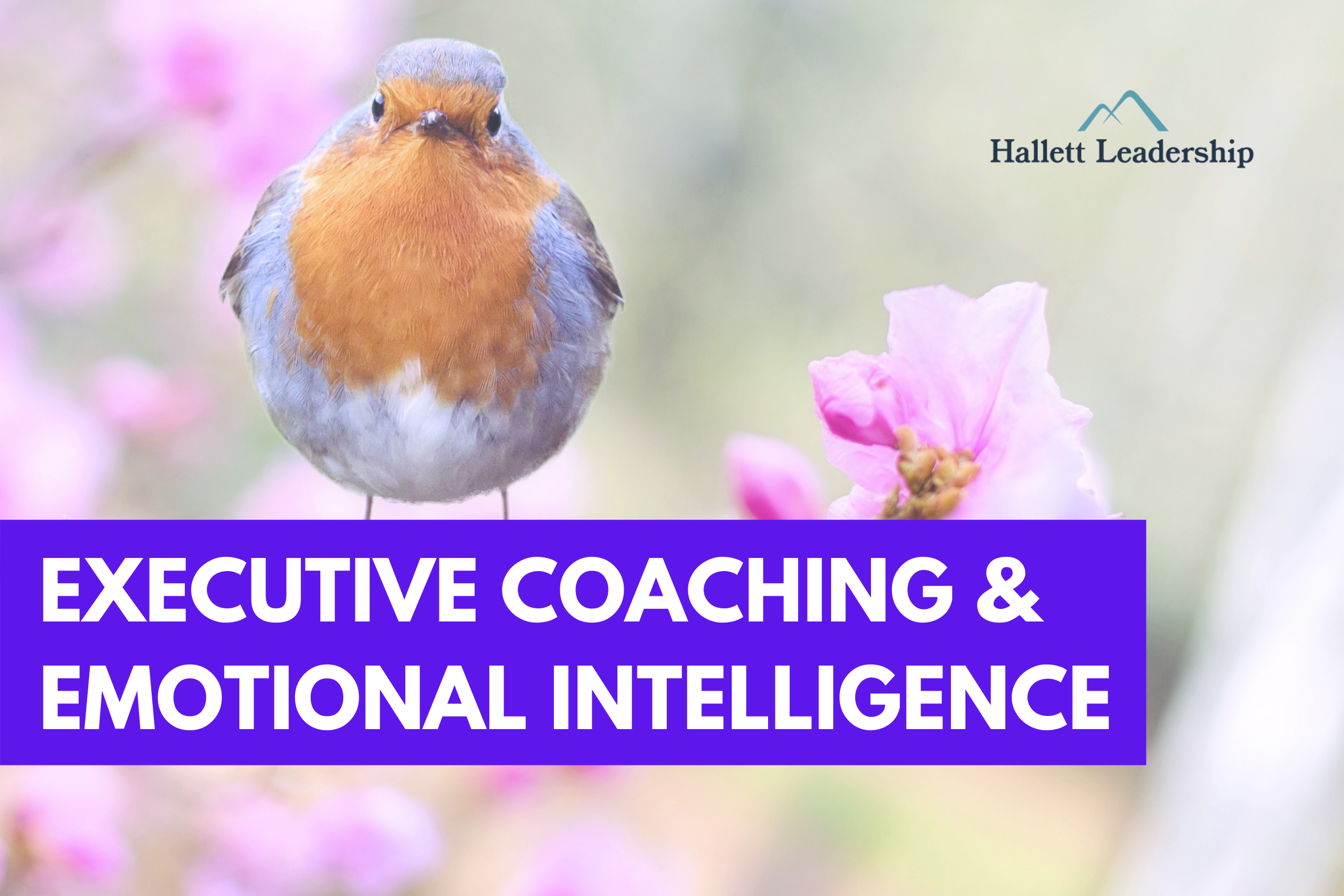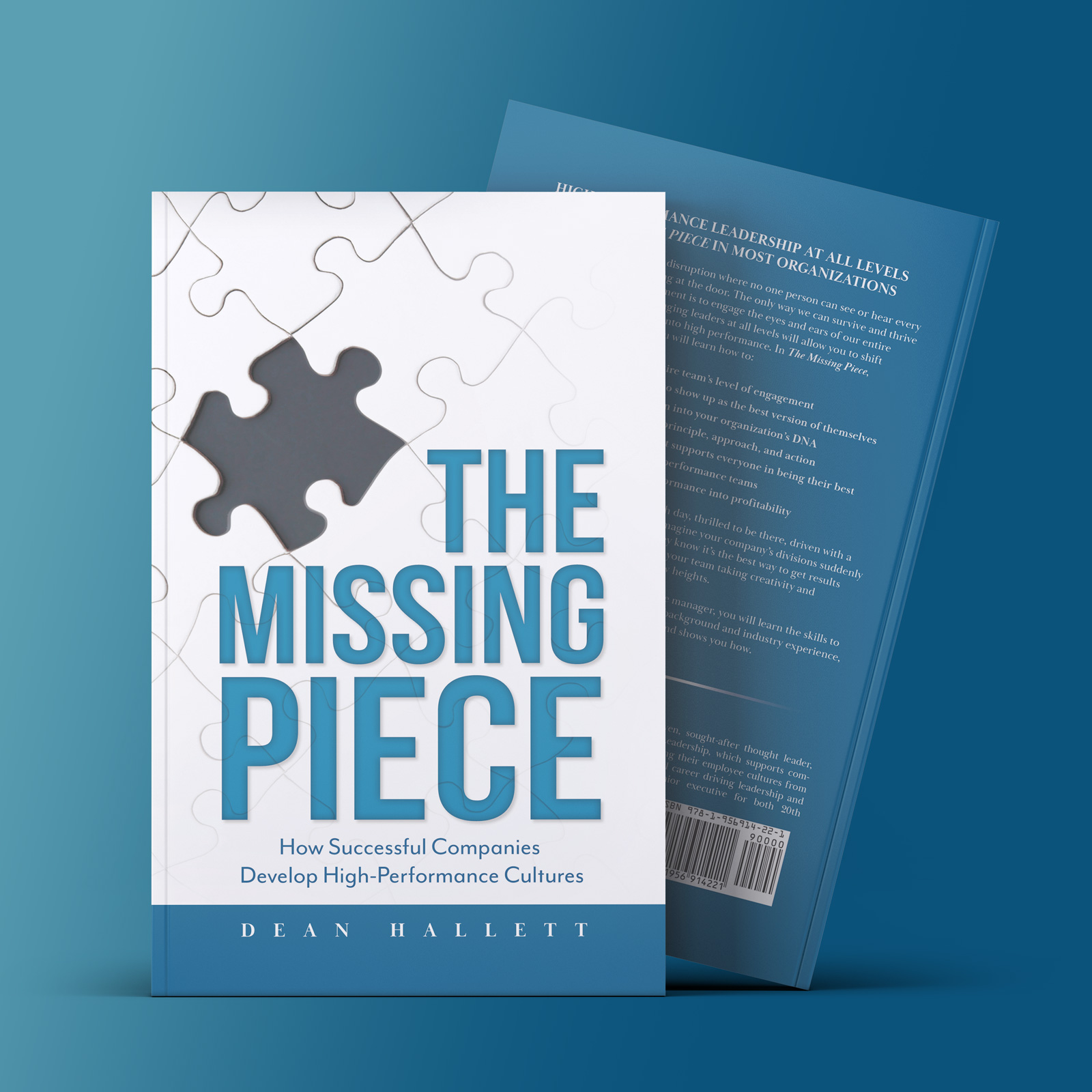At the start of any exploration of executive coaching and emotional intelligence, we should ask just whose emotional intelligence are we talking about – the coach or the client? The answer is both. In the executive coach-client relationship, the former utilizes emotional intelligence to support the latter in developing emotional intelligence.
Why is developing emotional intelligence important? Because in most cases, the client’s next phase of growth correlates with increased emotional intelligence.
But before going any further, we should clarify what we mean by “emotional intelligence.”
What We Mean By Emotional Intelligence
According to Psychology Today, emotional intelligence is the ability to first identify, then manage your emotions and also the emotions of others. At Hallett Leadership, we think of it less as “managing” emotions than “constructively influencing.”
This capacity of being able to identify one’s own emotions, then influencing one’s own emotions and the emotions of others, can express itself in a number of different ways.
Here are a few of those expressions that we have observed in the workplace:
- The executive’s ability to regulate his or her own nervous system, especially during stressful situations.
- The ability to receive and constructively act upon feedback.
- The confidence and humility to be open to new possibilities, perspectives, and approaches to problems.
- The executive’s willingness to know and embrace the fact that there are things that he or she doesn’t know.
- The willingness to connect with peers and team members on an authentic level.
- Communicating authentically and transparently, while at the same time setting aside judgements and personal biases in order to get to the truth and/or the best solution possible.
While there are certainly more examples of emotional intelligence expressed in the workplace, these listed above provide us with a context to continue our discussion on executive coaching and emotional intelligence.
Let’s explore in more detail now, the role emotional intelligence plays in executive coaching…
Emotional Intelligence (EI): A Fundamental of Coaching
Emotional intelligence (EI) is the foundation of effective coaching. Coaching for emotional intelligence enables leaders to navigate relationships, make thoughtful decisions, and inspire trust. Understanding and utilizing emotional intelligence and coaching will help develop skills like self-awareness, empathy, and emotional regulation, which play a critical role in developing leaders who can motivate and connect with their teams.
Coaching with emotional intelligence involves teaching leaders to manage their emotions and understand the emotions of others. This fosters stronger communication, collaboration, and problem-solving. At Hallett Leadership, we integrate emotional intelligence into every session, helping leaders create meaningful change within their teams and organizations.
The Role of Emotional Intelligence in Executive Coaching
Emotional intelligence is a key currency for executives to invest in, and whether they are consciously aware of it or not, the search to be more effective in a leadership role is frequently a process of developing and increasing this currency of emotional intelligence.
In an executive coaching engagement, here is a summary of the use of emotional intelligence on both sides of the collaborative process we call executive coaching.
The Coach’s Side
Emotional intelligence is a primary tool in the executive coach’s arsenal, which we will describe in detail in the next section. Generally speaking, the coach is utilizing his or her emotional intelligence with the executive-client to gain that client’s trust, and forge an authentic, collaborative relationship with the client.
Why?
In order to support the client in developing their own emotional intelligence.
Through this process, the coach continually creates opportunities for the client to connect with people of different behavioral styles and circumstances in fresh new ways, creating opportunities to reach team members in more effective ways – and as a result, increasing the leadership influence of the executive-client.
The Client’s Side
The coach engages his or her emotional intelligence to serve as a catalyst for the executive-client to tap into their own emotional intelligence. Then, the executive-client can use their own expanded emotional intelligence as a tool to continue the journey into even greater levels of emotional intelligence.
What do we mean by this?
We mean that through the coaching relationship, the executive-client is about to be unsettled from their old, habitual ways of thinking, perceiving, and behaving. This can be uncomfortable.
Staying with the process of developing new ways of thinking, perceiving and behaving – despite discomfort – requires openness, and a willingness to step into the unknown. This openness and willingness to experience discomfort in order to do something differently, is itself an expression of the client’s existing emotional intelligence.
At the same time, this process is also developing and deepening the client’s emotional intelligence.
Why is the effort and the discomfort of using emotional intelligence to develop emotional intelligence worth it?
Because through this process, the coach is teaching the executive-client to use his or her increased emotional intelligence to be a better leader of teams.
To sum it up: the coach uses emotional intelligence in order for the client to develop emotional intelligence.
As a first step in the coaching journey, the coach interrupts the client’s fixed modes of thinking and behaving in the workplace.
How EI is linked to self-confidence
Self-confidence and emotional intelligence are deeply intertwined. Leaders with strong emotional intelligence (EI) understand their strengths and limitations, building genuine self-assurance. This clarity reduces self-doubt and allows for more confident, effective decision-making. Emotional intelligence enhances a leader’s ability to understand and manage emotions under pressure, creating resilience and a steady demeanor in challenging situations.
Receiving coaching for emotional intelligence will help you develop key skills like emotional regulation, empathy, and self-awareness, which are critical for fostering self-belief. At Hallett Leadership, we help leaders strengthen their emotional intelligence to boost confidence, enabling them to inspire teams and lead with clarity, authority, and compassion.
How to Use and Develop Emotional Intelligence in Your Coaching
Incorporating emotional intelligence and coaching requires intentionally focusing on key elements like self-awareness, interpersonal skills, and empathy. Coaches help leaders reflect on how their emotions influence their actions and relationships. This awareness allows them to make deliberate and effective choices.
Techniques such as active listening, constructive feedback, and mindfulness play a crucial role in developing emotional intelligence. At Hallett Leadership, we integrate these practices into coaching through interactive exercises emphasizing emotional regulation and thoughtful communication. Leaders gain the tools to navigate challenges with empathy, build trust, and inspire innovation within their teams, transforming personal and professional dynamics.
Our approach ensures that emotional intelligence becomes a foundational element of leadership, enabling participants to foster stronger collaboration, resolve conflicts effectively, and align their teams with organizational goals.
Improve Your Own Emotional Intelligence
Developing emotional intelligence starts with self-awareness, which is an important step in leadership. Reflect on your emotions and identify triggers that impact your reactions. Recognize patterns and assess how these affect your decision-making and relationships.
Empathy is another cornerstone. Practice active listening to understand the perspectives of others, fostering better connections. Coaching with emotional intelligence can amplify these skills. At Hallett Leadership, we use techniques like mindfulness, journaling, and real-time feedback to help leaders build emotional resilience. These tools enhance focus, reduce stress, and improve communication, transforming workplace dynamics into collaborative, trust-filled environments. Emotional intelligence strengthens leadership and team success alike.
The Coach Interrupts Client’s Automated Behaviors
We have written about blind spots before. Those are the areas of our awareness that remain hidden from our conscious awareness. We are “blind” to them. Generally speaking, this is the region of the psyche where our assumptions, fixed beliefs and automated behaviors live.
There is nothing wrong, per se, with assumptions, fixed beliefs, and automated behaviors. The main issue is that our current state of affairs, in business and in life, is a direct expression of all this material hidden away in our blind spot.
If we want to grow, and become more than what we presently are, then we must find a way to become aware of what lies in our blind spot.
Helping the executive client become aware of what is in his or her blind spot might be the greatest value, above all others, that a coach can provide during a coaching engagement. Otherwise, the executive-client may not make meaningful changes, or gains, in their leadership, careers, and even personal lives.
Coaching IS Interruption
Coaching is by definition interruption.
Assumptions, fixed beliefs and automated behaviors have an inertia, or momentum of their own. The only way the executive client has a chance of seeing into their blind spot, is if the coach and client, together, find a way to interrupt those automated programs.
In an ideal scenario, the executive coach can rely on effective questioning and conversation to facilitate the client’s self-interruption. To let the client talk through a situation, examine different facets, and let the client have his or her own interruption, or aha! moment.
Sometimes, the interruption doesn’t occur through conversation and self-interruption alone. Or at all.
In another scenario, the client may be really stuck. They think they have the right answer, and they’re not open to input.
The coach in such an instance must rely upon emotional intelligence to find the best method of interruption based on the client’s behavioral style and unique situation – to create the best odds that the client will be open to what the coach has to say.
If the client is really, really stuck, the coach may even have to enact a dramatic interruption.
Your teammates have reported that everyone in the department perceives you as very unfair a lot of the time, and even intolerant. In other words, a real tyrant.
If necessary, the dramatic interruption can effectively grab someone’s attention, and open the door to growth in openness and emotional intelligence necessary to turn over a new leaf and begin leading in a more effective way.
Conclusion
We hope that you have gained increased understanding of the role emotional intelligence plays in the executive coaching relationship, on both the provider and client side. In the process of vetting and interviewing the right executive coaches, it may be worthwhile to pay attention to evidence of emotional intelligence in the coach’s behavior.
Does he or she listen well? Are they coming from a place of knowing the answer and “fixing” you?
Or do they ask open ended and thought provoking questions? Are they coming from excellence, and an intention to serve your best interests, no matter what?
We wish you best of luck on your executive coaching journey. Please contact us if we can be of support on your search.





